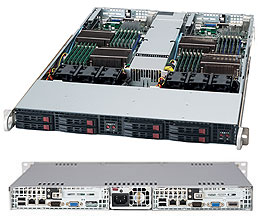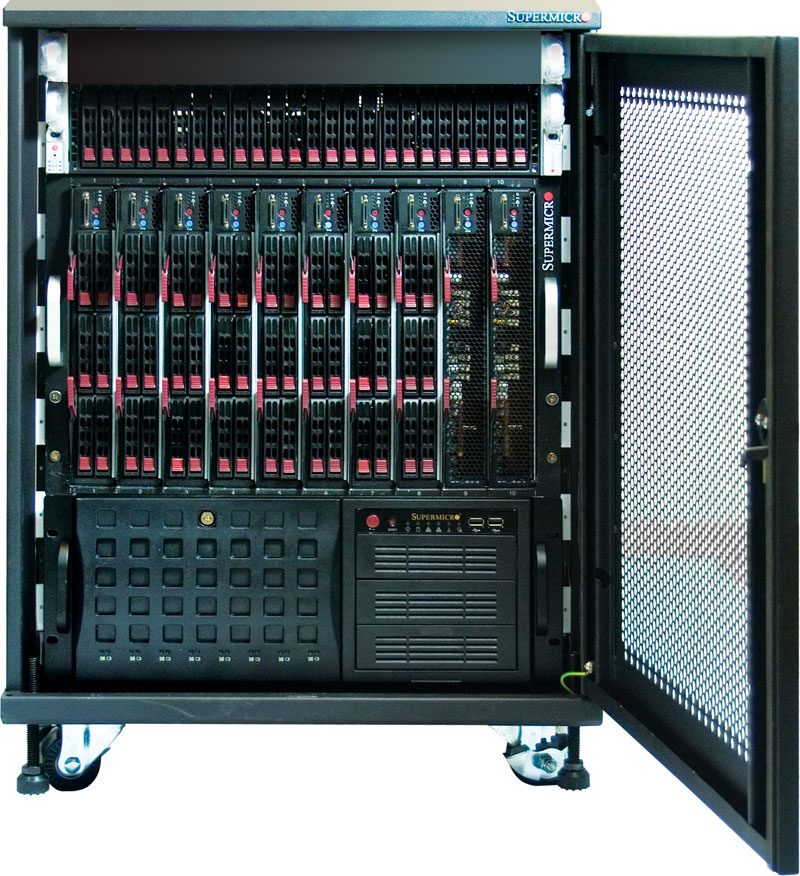Changing Of The Guard: 2.5” Hard Drives In The Enterprise
Special Solutions And Blade Servers
Some highly-customized options allow for cramming more computing power into a very limited space. One good example is Supermicro’s SC809T-1200B, a dual 1U system that provides four 2.5” drive bays for each internal server. Since control elements are required on the front panel, there's no way such a system could provide the maximum of 10 2.5” drives.
Blades
The picture above shows a small 12U rack holding three devices: a 4U system on the bottom, a 7U blade enclosure with 10 modules, and a 2U server on top. Blades typically consist of a 7U enclusure containing up to 10 blade servers and assorted modules. While regular rackmount servers include power supplies and networking options, blade servers provide shared power and networking options. Clearly, blades are the most efficient way to increase computing density in server environments.
Here's a huge advantage for 2.5” over 3.5” drives: the latter won’t fit into individual blades, meaning that all blade servers must be equipped with 2.5” drives. This not only saves space, but also power. Up to 60 2.5” drives can fit within a full 10-blade enclosure. Sixty drives multiplied by the 7.1W workstation I/O power requirement for Toshiba's MBF2600RC results in a 426W typical power load. This should not be seen as peak power, but rather as a rough starting point. In contrast, the same amount of 3.5” drives would require at least 9U and 744W power.
Many blade products are capable of accepting three or six 2.5” drives (for double blades), which allows systems to be set up with redundancy and decent performance capabilities.
Get Tom's Hardware's best news and in-depth reviews, straight to your inbox.
Current page: Special Solutions And Blade Servers
Prev Page Rackmount Servers Next Page Test Setup And Transfer Diagrams
